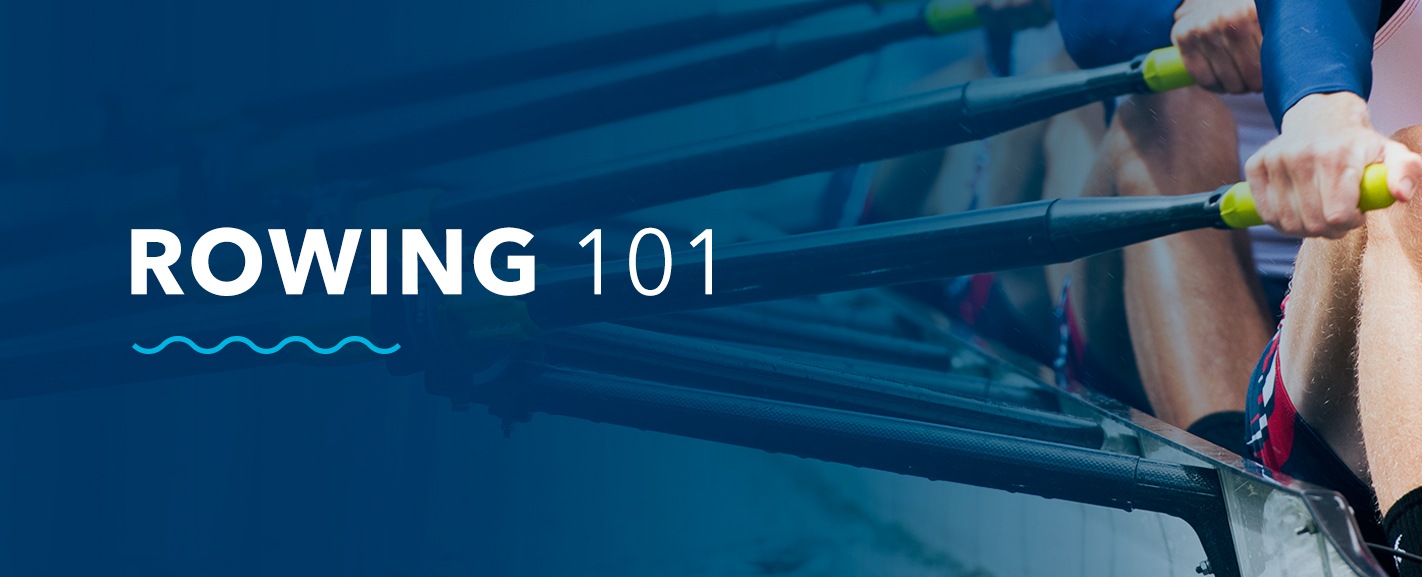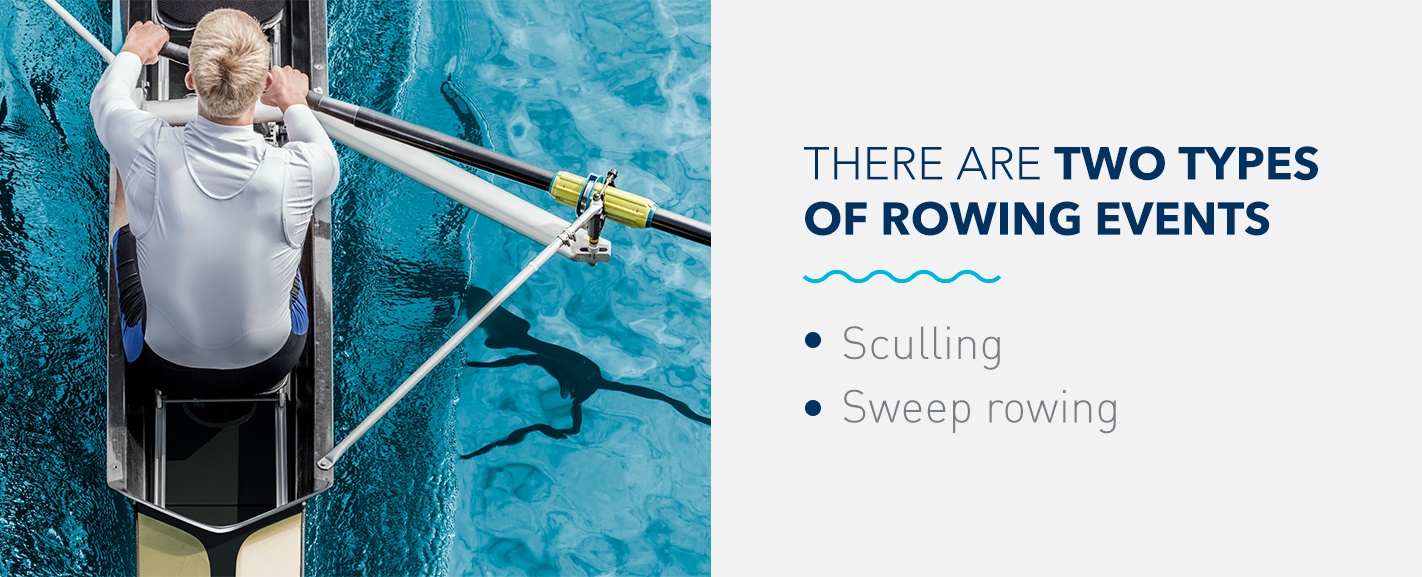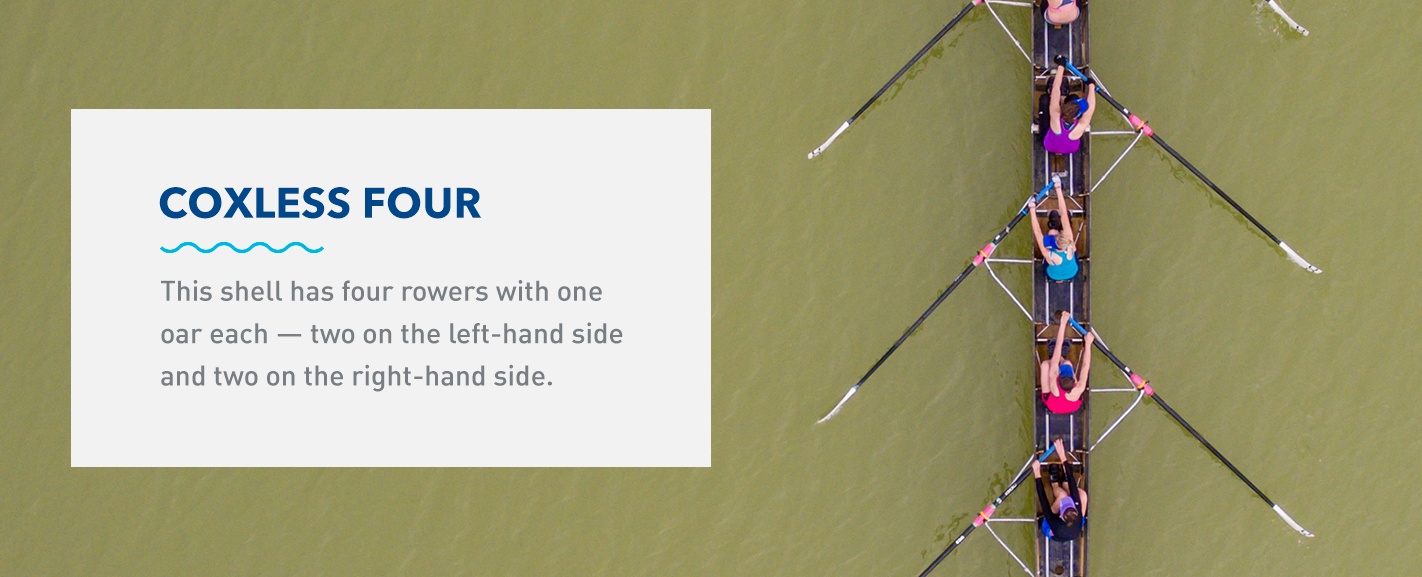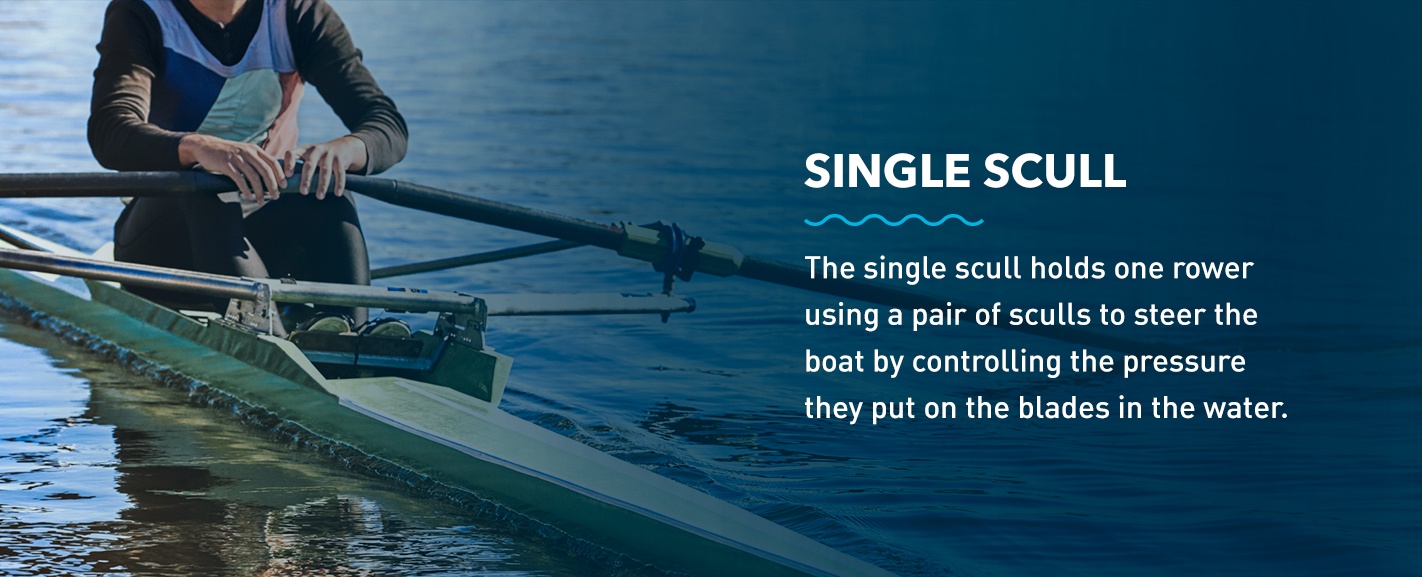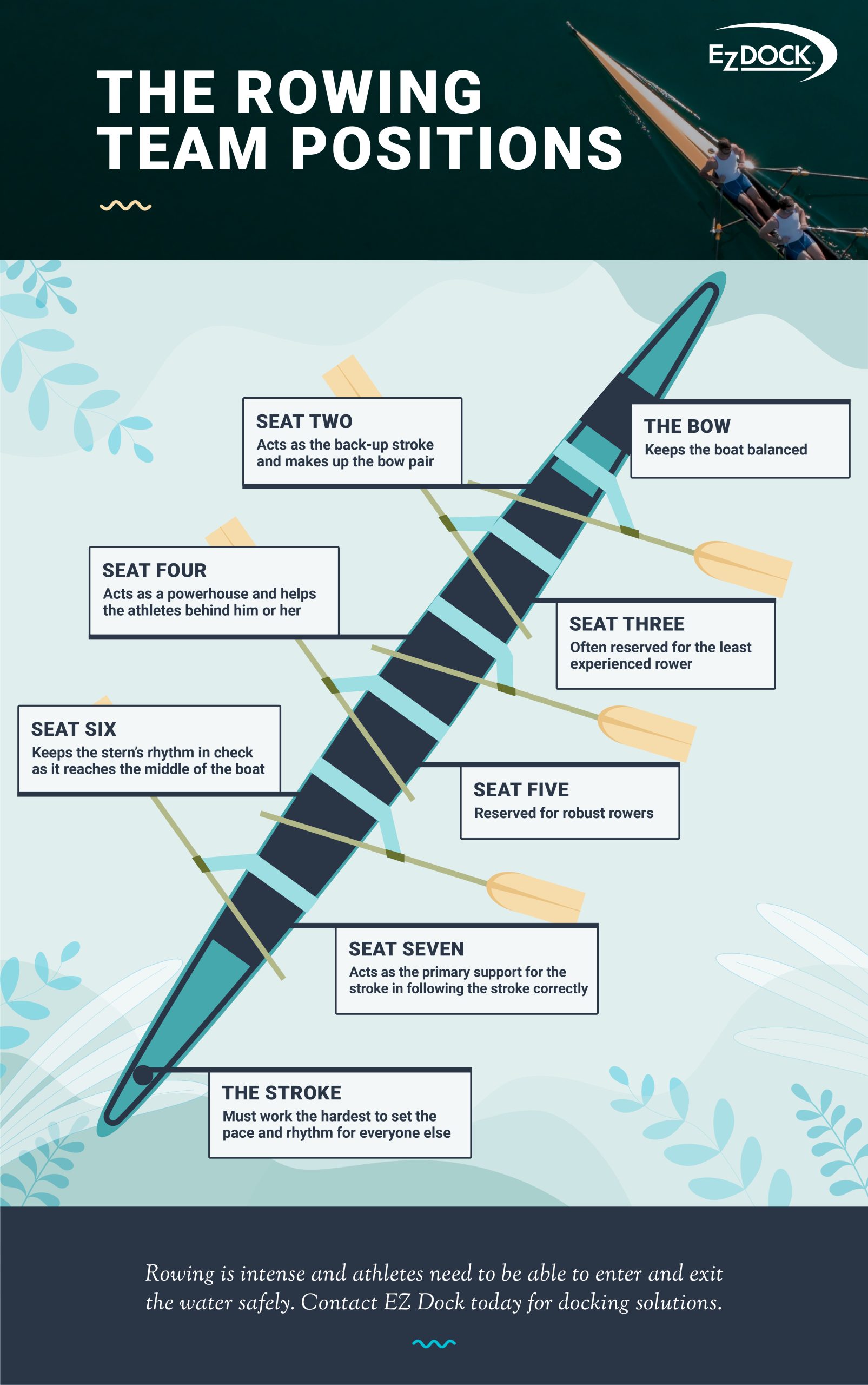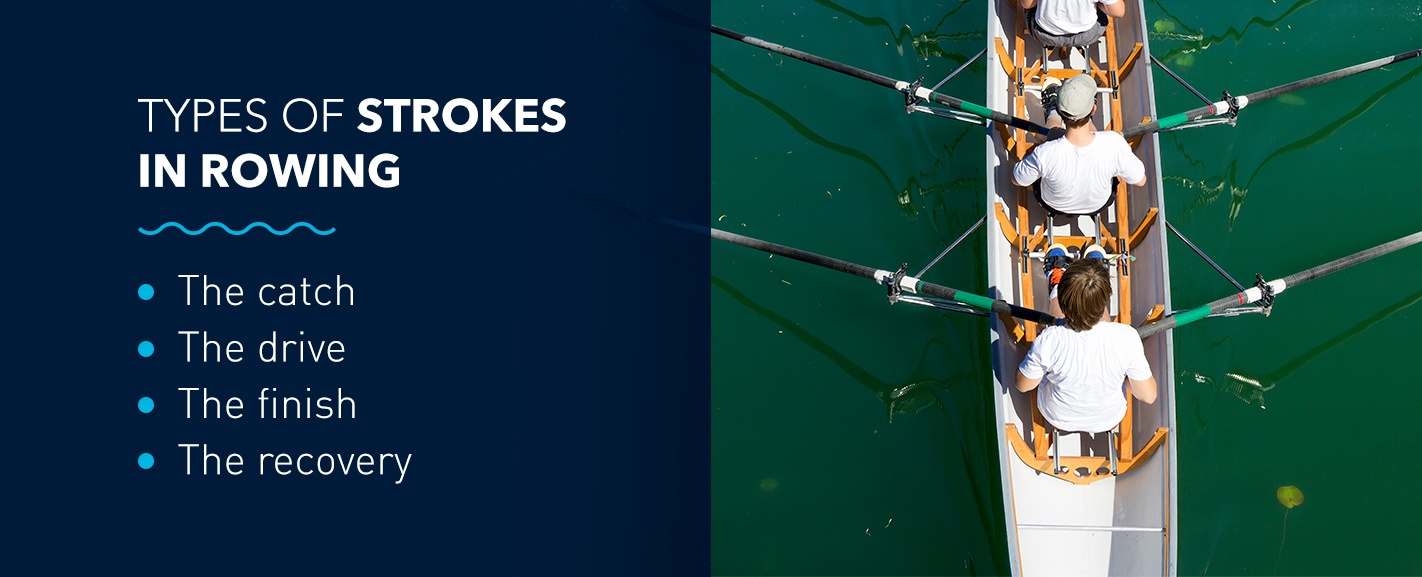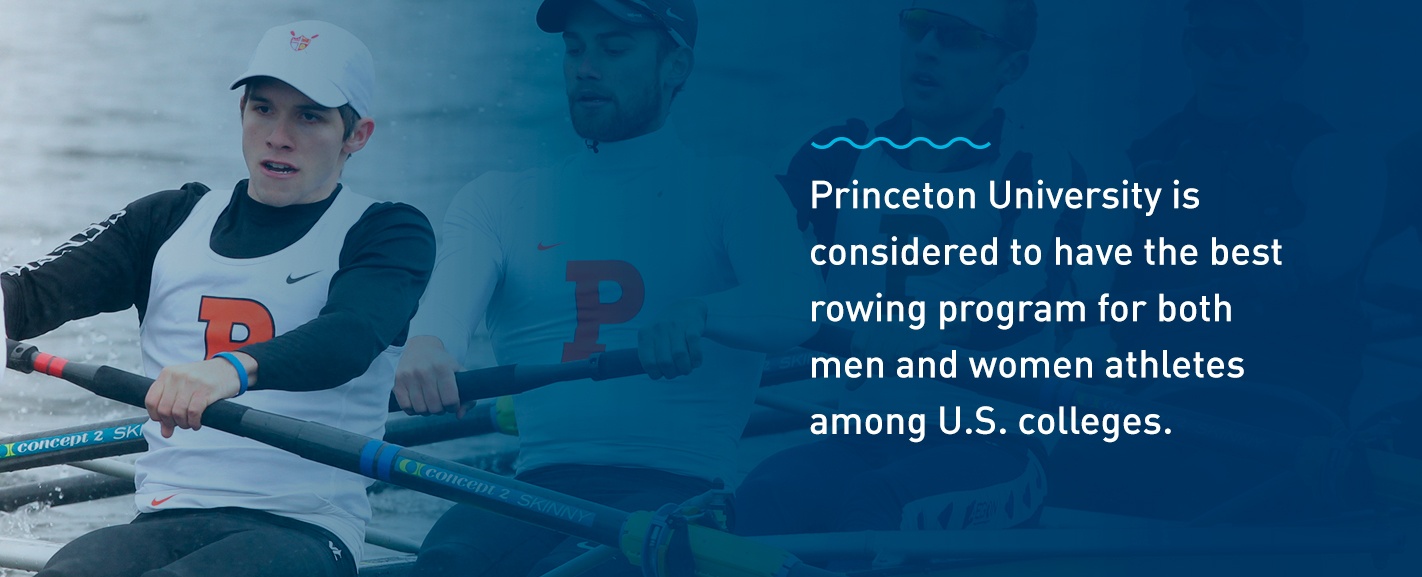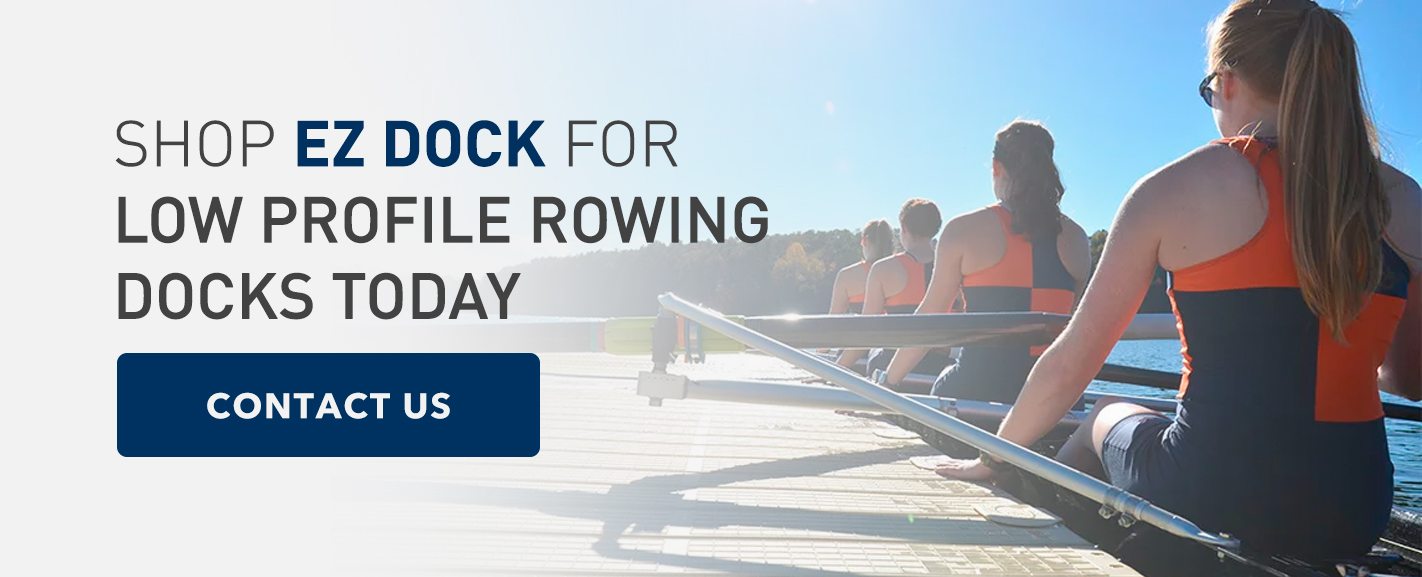Filters
Rowing 101: A Guide to Rowing and Sculling
What started as a transportation method in ancient Greece, Rome and Egypt, has since turned into one of America’s favorite sports — rowing. Rowing is the first team sport contested in the U.S. and continues to be a popular competitive sport among many schools.
In competitions today, rowers can race solo or in teams of two, four or even eight. Rowing was also the first U.S. sport to have a national governing body. This guide will discuss the basics of rowing, from racing to different types of boats and stroke techniques.
Read the full guide or jump to a specific section:
- How Old Is the Sport of Rowing?
- What Are the Categories in Rowing?
- What to Know About Races
- What Are the Types of Boats?
- What Are the Rowing Team Positions?
- Rowing Quick Facts
- Shop EZ Dock for Low Profile Rowing Docks Today
How Old Is the Sport of Rowing?
Rowing goes back to around 1000 BC, after early humans discovered oars were more efficient than paddles and sliding seats made it easier to exert force against the oar and make the boat go faster. Rowing continued to grow quickly, gaining popularity around the mid-1850s. Boatmen even made a living from the sport, although their names were hardly mentioned at first. They were instead known by their boats. Around the time of the Civil War, however, these men started gaining recognition. People like the Biglin and Ward brothers were distinguished figures, racing for up to $3,000 a race.
In 1896, rowing was inaugurated into the modern Olympics, but bad weather forced officials to cancel the event. The first rowing race for heavyweight men in the Olympics was in 1900, with women’s events added in 1976.
What Are the Categories in Rowing?
Like most sports, rowing breaks down into different types of events and groups. There are two types of rowing events — sculling and sweep rowing — and each event breaks down into lightweight and open weight.
When it comes to the open categories, any athlete can join, regardless of weight. For lightweight events, men must not exceed 160 pounds, and the calculated average weight among athletes in one boat must not exceed 155 pounds. In women’s events, women competing in the lightweight category can’t weigh more than 130 pounds, but there’s no average weight for women’s boats.
Events then break down by age. Athletes under 19 years old who won’t be turning 19 in the current calendar year or still attend secondary school falls into the junior category. Next is the under-23 category, and then masters. Traditionally, rowing athletes can reach master status once they turn 27, but many events today offer an updated master’s group where athletes only have to be 21. These masters events usually divide into age subcategories by letter designation, and athletes of all ages are welcome to row in open events.
What to Know About Races
Most U.S. rowing races and international races are 1.25 miles long, or 2,000 meters. This race is known as the sprint race, used in national, collegiate, worlds and Olympic competitions. There are six to eight lanes with every 500-meter section marked with buoys. However, junior races are typically 1,500 meters, and masters are 1,000 meters.
At the beginning of the race, boats line up in assigned lanes while someone in each lane holds the stern of the boat still. An official, often referred to as the aligner, examines each boat to ensure all boats are squarely facing the course and are in even positions at the start.
Crews are allowed one false start in the race but are disqualified if they do it twice. In cases where equipment breaks within the first 100 meters, such as a broken oar, they stop the race and restart it once the crew has repaired equipment. Rowers can leave their lanes during a race without any penalization as long as they aren’t interfering with anyone’s chance to win. Following the sprint race, rowers usually row for another five to ten minutes as a cool down.
In the fall, rowers may also compete in head races, which are 2.5 miles long to three miles long. In this race, boats in each division start separately at 10-second intervals and row along rivers with obstacles like bridges or turns. The winning crew of a head race has the shortest time between the start and finish.
What Are the Types of Boats?
Boats are essential to the sport of rowing. While you may hear them simply referred to as boats, rowing boats are also frequently called shells. They are made from lightweight carbon fiber and reinforced plastic. Since shells are crucial to rowing, many crews will even give their rowing shells names to honor their importance.
Sometimes athletes name their boat in honor of alumni, a coach, a team goal or a mantra. There are two main types of rowing shells — crew boats and sculling boats. There are also different types of boats according to the number of people inside.
Types of Crew Boats
When it comes to rowing, there are different boats teams may use:
- Coxless pair: This shell has two rowers equipped with one oar each: one on the left-hand side and one on the right-hand side. One rower steers the boat through a rudder connected by cables, since there is not a coxswain.
- Coxed pair: This boat also has two rowers with one oar each, but comes with a coxswain to direct the athletes and steer the boat with a rudder attached to cables.
- Coxless four: This shell has four rowers with one oar each — two on the left-hand side and two on the right-hand side. One of the rowers usually uses their foot to steer the boat since there is no coxswain.
- Coxed four: This boat has four rowers with one oar each and a coxswain to steer the boat.
- Coxed eight: This shell has eight rowers with one oar each — four on each side with a coxswain to steer.
Types of Sculling Boats
Just as there are different boats for rowing, there are also different boats specifically for sculling — where athletes each use two oars, also known as sculls, instead of one. The different types include:
- Single scull: Sometimes referred to as the single or 1x, the single scull holds one rower using a pair of sculls to steer the boat by controlling the pressure they put on the blades in the water.
- Double scull: Also known as the double or 2x, a double scull has two people, each with a pair of sculls who steer the boat using the same technique.
- Coxless quad and coxed quad: These sculling boats are for four people. The coxless quad usually requires one of the athletes to steer with their foot, while the coxed quad uses a coxswain to steer. The coxed quad is typically only used in rowing for beginners or juniors.
- Octuple scull: This type of boat is very rare, as only beginners typically use it. This boat uses eight rowers equipped with a pair of sculls and a cox to steer the boat.
What Are the Rowing Team Positions?
Positioning rowing team members is a systematic process. Each athlete is identified by their seat number in the boat. For example, the person sitting in the bow will cross the finish line first, so that seat is known as the number one seat, or bow seat. The person behind the bow is seat number two, then seat number three and so on until seat number eight, which some refer to as the stroke. Each crew position has a specific function, crucial to the entire boat’s success:
- The bow: This person, who sits in seat one, works to keep the boat balanced. Since they’re seated at the front, it’s crucial that the bow is sharp and has excellent technique, as their oar blade makes the most difference when they put it in the water.
- Seat two: This athlete acts as the back-up stroke and makes up the bow pair as the second seat in the boat. The two athletes that make up the bow pair must be the most accurate members of the team at the beginning of each stroke.
- Seat three: Often reserved for the least experienced rower on the team, this seat has less responsibility than the others. This doesn’t mean seat three can be a weak link, but they won’t affect the rhythm much since they aren’t close enough to the stern or right at the bow.
- Seat four: Seat four must act as a powerhouse in the middle of the boat and help the athletes behind him or her.
- Seat five: Like seat four, seat five is reserved for robust rowers.
- Seat six: Seat six works to keep the stern’s rhythm in check as it reaches the middle of the boat. Since they are typically the tallest member of the team, they help lengthen strokes and get the boat to go further.
- Seat seven: The athlete in seat seven must act as the primary support for the stroke, taking the rhythm of the stroke and following it correctly. Seat seven makes up the stern pair with the stroke and must be a fluid, consistent rower. If they don’t follow the stroke’s pace, it messes it up for everyone in front of them.
- The stroke: Perhaps the most challenging seat of all, the stroke must work the hardest to set the pace and rhythm for everyone else on the boat to follow. This athlete must be an extremely powerful rower with excellent technique.
Some boats may also have a coxswain onboard who acts as the eyes and ears of the boat. The coxswain is usually present with teams of four or more, but is not numbered. They’re the head of the boat, generally sitting in the stern, but may also have a lie-down position in the bow end. The coxswain motivates and communicates with the team, leading them in the race. The coxswain also steers the boat and works to get the boat set up correctly before a race. They often use a CoxBox — an electronic amplifier system — to amplify their voice and look at stroke rate and time.
Rowing vs. Crew
What is the difference between rowing and crew?
Generally, the terms “rowing” and “crew” refer to the same sport. Sometimes schools and colleges in the U.S. will refer to the sport of rowing — where athletes row across a body of water with one oar each — as crew. In nautical terms, “crew” refers to the people who operate a boat, but it’s used in America as another word for the sport. Usually, outside of the academic world, the sport is simply referred to as rowing, such as the United States Rowing Association, for example.
Strokes
The stroke is an essential part of every rowing race — it can determine who takes the lead and who falls behind. Rowing strokes require athletes to use their entire body to move the boat through the water. While many think strokes are primarily produced from arm strength, much of the stroke actually comes from leg strength.
The act of rowing uses all the major muscle groups, from the arms and legs to the abs and glutes, and requires upper body core strength to power the stroke. Rowers must also have an excellent sense of coordination, balance and flexibility and work together to focus on finding the right stroke rhythm that keeps the crew in sync.
What Are the Types of Strokes in Rowing?
Although the rowing motion shouldn’t have a definite beginning or end, there are four main steps when it comes to the anatomy of a rowing stroke — the catch, the drive, the finish and the recovery:
- The catch: The catch is when the oar blade quickly enters the water vertically. When they start the stroke, the rower is coiled up on the sliding seat with their knees bent and arms stretched. Instead of solely using power to get the oar in the water, athletes also rely on the blade’s weight and gravity. Rowers must also make sure the catch is in sync with the speed of the boat and try not to get much front splash or backsplash.
- The drive: During the beginning of the drive, rowers are still in the same body position and focus on using their legs. Then, athletes will start to uncoil their upper body and put their arms to work as they draw the oar blades through the water. As athletes continue the drive step, they swiftly move their hands into the body in a layback-like position, which requires great abdominal strength. If rowers uncoil before dropping the oar blade, they could compromise their speed.
- The finish: Also sometimes called the release, this step is where rowers move the oar handle down and draw it out of the water in a quick, clean motion while turning the handle so that the blade goes from vertical to horizontal. This movement is also known as feathering the oar.
- The recovery: As rowers enter recovery, they move their hands away from their body and past the knees. During this motion, the oar is out of the water. Then, the blade travels smoothly back toward the bow, and the athletes move their bodies forward until they have their knees bent and are ready for the next catch.
Shells move fastest at the release point and slowest during the catch. The stroke rate refers to the number of rowing strokes per minute a crew takes. However, higher stroke rates don’t always equate to going faster — talented crews could still cover more water more quickly than an inexperienced crew with a higher stroke rate. Sometimes crews may even yell out a “Power 10,” which signals the crew to give their strongest, hardest ten strokes.
Sculling vs. Rowing
There are two main ways to get across the water — sweep rowing and sculling. While rowing is often the go-to terminology to encompass the sport, rowing often only refers to sweep rowing. Instead of using one oar like they would in sweep rowing, athletes may opt to compete in sculling events where they use two oars — one in each hand.
When it comes to sculling events, there are three main categories. First, there is the single, where only one athlete will compete. Then, there’s the double with two people, and lastly, the quad with four people. Whereas, in sweep rowing, there are racing events only for pairs, quads or eights. Most rowing events at schools and colleges are sweep rowing events, but some might offer sculling to help improve students’ skills.
There is also a difference between sweep rowing and sculling regarding boats. Boats with scullers in them — athletes with two oars each — are referred to as sculls. Although this means all sculls can be considered shells, not all shells can be considered sculls. The single scull is regarded as the smallest boat on the water, as it can be as small as 10 inches across and 27 feet long.
Rowing Quick Facts
Did you know some physiologists say rowing in a 2,000-meter race requires the same level of work as playing two basketball games back-to-back? Or that astrophysicist Stephen Hawking was a coxswain?
Rowing and Schools
- The rowing race between Harvard and Yale that first started in 1852 is the longest-running U.S. sporting competition and the first intercollegiate sport ever contested in America.
- The first collegiate boat club in the U.S. was founded in 1843 at Yale College.
- Princeton University is considered to have the best rowing program for both men and women athletes among U.S. colleges.
- Rowing is considered one of the hardest NCAA sports teams to join in college sports.
Rowing and the Olympics
- The founder of the modern Olympics, Baron Pierre de Coubertin, was a rower.
- The USA won the gold medal for the men’s eight at every Olympic Games from 1920 to 1956.
- The U.S. men’s eight won its third gold medal in a row at the world championships for the first time in U.S. history in 1999.
- The U.S. women’s eight won gold at the World Rowing Championships in 2013, adding to its streak of eight world or Olympic titles in a row.
Shop EZ Dock for Low Profile Rowing Docks Today
Rowing is an intense sport, and athletes need to get out of their boats safely and easily onto a dock after an exhausting race. For stable yet straightforward docking solutions, trust EZ Dock. EZ Dock low profile rowing docks have a low freeboard height, making them accessible for crews of all sizes as they exit their shells, and are ideal for all competitive rowing events.
The modular design allows for easy installation, and since the docks are made of polyethylene, you don’t have to worry about any splintering, painting or rotting. EZ Dock rowing docks use patented flotation technology for enhanced stability and exceed both FISA and USA rowing standards. For your next rowing event, see how EZ Dock can be the perfect docking solution for your crew.
Request a quote or contact us today for low profile docks, dock accessories, dock sections and more.

